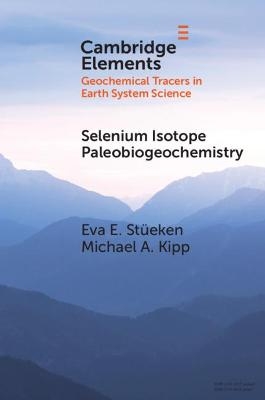
Selenium Isotope Paleobiogeochemistry
Seiten
2020
Cambridge University Press (Verlag)
978-1-108-74916-9 (ISBN)
Cambridge University Press (Verlag)
978-1-108-74916-9 (ISBN)
The attraction of selenium isotopes as a paleoenvironmental tracer lies in the high redox potential of selenium oxyanions (SeIV and SeVI), the dominant species in the modern ocean. The largest isotopic fractionations occur during oxyanion reduction, which makes selenium isotopes a sensitive proxy for the redox evolution of our planet. As a case study we review existing data from the Neoarchean and Paleoproterozoic, which show that significant isotopic fractionations are absent until 2.5 Ga, and prolonged isotopic deviations only appear around 2.3 Ga. Selenium isotopes have thus begun to reveal complex spatiotemporal redox patterns not reflected in other proxies.
1. Introduction; 2. Materials and Analytical Methods; 3. Proxy Mechanics; 4. Case Study; 5. Future Prospects.
| Erscheinungsdatum | 01.10.2020 |
|---|---|
| Reihe/Serie | Elements in Geochemical Tracers in Earth System Science |
| Zusatzinfo | Worked examples or Exercises |
| Verlagsort | Cambridge |
| Sprache | englisch |
| Maße | 230 x 150 mm |
| Gewicht | 600 g |
| Themenwelt | Naturwissenschaften ► Biologie ► Ökologie / Naturschutz |
| Naturwissenschaften ► Geowissenschaften ► Geologie | |
| Naturwissenschaften ► Geowissenschaften ► Hydrologie / Ozeanografie | |
| ISBN-10 | 1-108-74916-X / 110874916X |
| ISBN-13 | 978-1-108-74916-9 / 9781108749169 |
| Zustand | Neuware |
| Haben Sie eine Frage zum Produkt? |
Mehr entdecken
aus dem Bereich
aus dem Bereich


